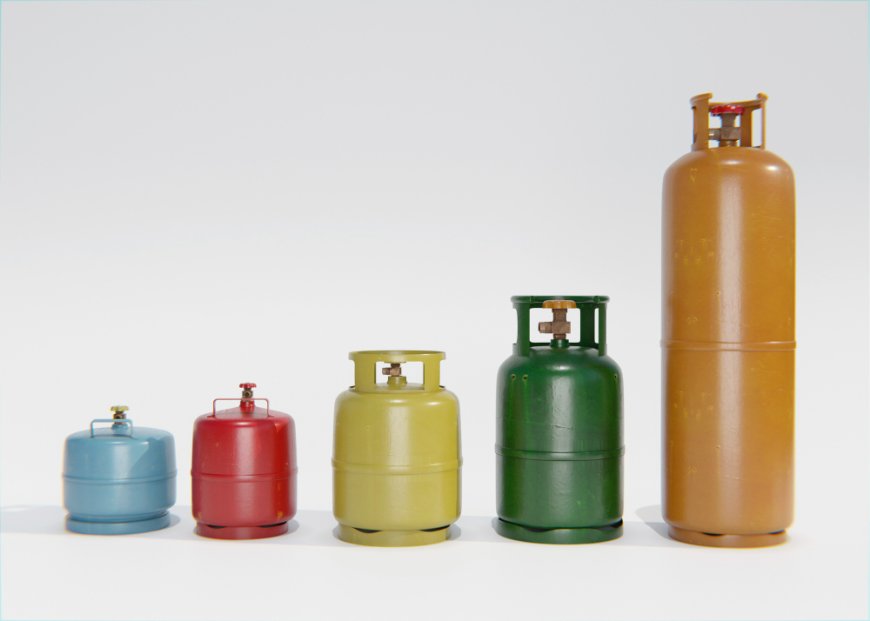Why Your Water Heater Needs an Expansion Tank?
In this article, we will inform you, with the help of an expansion tank manufacturer, about what an expansion tank is, why you would want to install one, how it operates, and when you should install one on your hot water heater.

If you've ever taken a peek at your water heater installation or talked to a plumber about it, you've probably had someone bring up an expansion tank to you. It may sound like some sort of extraneous add-on feature at first glance, but it's actually a fairly essential part of having the integrity of your plumbing system in your house. In fact, in most of the United States, it's actually code-required for closed-loop water heater installations.
In this article, we will inform you, with the help of an , Expansion Tank Manufacturer about what an expansion tank is, why you would want to install one, how it operates, and when you should install one on your hot water heater.
What is an Expansion Tank?
Expansion tank is a tiny tank close to your water heater that assists in counterbalancing the expansion of water volume and pressure when water is heated. Water heats up when it is heateda natural physical principle known as thermal expansion. If that additional volume has nowhere to go, it can put tremendous pressure on your plumbing system.
Expansion tank is a relief tank that takes in the expanded water so that it will not be harmful.
Why Does Water Expand When It Is Heated
You must learn thermal expansion first so you would know why you would need an expansion tank. Water does indeed expand when you heat it. For better understanding, heating 40 gallons of water makes the volume increase by almost half a gallon.
Pressure forces water into the urban water system in an open system. But in a closed systemthe check valve or pressure-reducing valve (PRV) does not allow water to back upthe pressure does not have an outlet. This creates a potentially deadly pressure in your water heater, fixtures, and pipes.
The Role Played by an Expansion Tank
This is how an expansion tank saves the day:
- Takes Up Additional Pressure: The Expansion tank is divided by a diaphragm or rubber bladder. It has one mounted over your plumbing system and another air-filled one. When water is heated and expands, additional water enters the expansion tank and pushes out compressed air and equalizes pressure.
- Saves Your House from Water Damage: Excess pressure in an enclosed system will stretch pipes, burst unions, or drain valves. An expansion tank will save your house from this potential damage.
- Reduces Appliance Life: Home appliances like dishwashers, washing machines, and even the water heater itself live longer when they are protected from pressure surges.
- Supports Water Pressure: It eliminates frustrating pressure fluctuations at showerheads and faucets.
Is the Expansion Tank Required by Law? Expansion tanks are typically required by law in the majority of the United States' states, especially states with recent plumbing codes, whenever there is the installation of a pressure-reducing valve or backflow prevention device on the master water line.
Violation of local plumbing codes can result in failed inspections, voided warranties, or rejection of insurance claims in the event of water damage.
Always refer to your city locally or a professional plumber for local codes.
Signs You May Need to Add a Supplement to Your Tank
In case you are not quite sure if your system needs an expansion tank or not, the following are some signs to watch out for:
- Dripping water heater relief valve: Leaking relief valves on a regular basis are most likely a sign that thermal expansion is exerting too much pressure.
- High Water Pressure: Over 80 psi is unsafe. Check it with a pressure gauge.
- Closed System Plumbing: If a check valve or PRV has been recently installed, then an expansion tank would be proper.
- New Water Heater Installation: New installation of a water heater usually requires, under building codes, installation of an expansion tank, particularly in a closed system.
- Plumbing Fixture Leaks: Intermittent dripping or premature failure of toilet fill valves, fittings or faucets could be the consequence of pressure issues as a result of not having an expansion tank.
Selecting the Proper Expansion Tank
Not all expansion tanks are equal. The selection of an adequate expansion tank will be based on the following:
- Water Heater Size: Larger water heaters generate greater thermal expansion.
- House Water Pressure: The heavier-duty, larger expansion tanks are utilized in the higher-pressure systems.
- System: Either a tank or tankless system, so design will be taken into account when choosing the tank.
A 2-gallon tank is a standard house expansion tank and is only for a 4050 gallon water heater. High-rise or commercial sizes are available in larger capacities.
How do you install an expansion tank?
Installation is typically
- Disconnection of electricity (or gas) and water supply to the water heater.
- Cold-water supply pipe installation in conjunction with the water heater.
- Suspension of the tank horizontally or vertically using T-fittings and brackets.
- Pressurizing the air side of the tank to support static water pressure.
- Leak and pressure balance tests within the system.
- Not so difficult for a competent plumber but perilous to do incorrectlyparticularly pressurized systems and electrical/gas connections.
Expansion Tanks for Tankless Water Heater
Tankless water heaters, like tankless hot water appliances, heat water when you need it and never store it, so they don't cause the same type of thermal expansion as heater storage tanks. But if you already have storage tanks and recirculation systems and you also possess a tankless appliance, then an expansion tank will still be recommended.
A plumber will be able to determine if your specific system needs one or not by design.
Misconceptions About Expansion Tanks
Myth #1: Expansion tanks are unnecessary.
Fact: They are mandatory on closed systems and, in the majority of jurisdictions, legally.
Myth 2: Expansion tanks are too expensive.
Fact: Expansion tanks are usually priced at $40$70 and are not so expensive to install compared to fixing water damage or replacing appliances.
Myth 3: They never have to be serviced after the tank has been installed.
Fact: Like any other component, expansion tanks will rust eventually. Bladders get blown or lose pressure. Always check your expansion tank each year during water heater maintenance.
Final Thoughts
Having a water heater expansion tank is well worth the precautionary measure that protects your home plumbing system from overpressure, keeps your appliances from wearing out, and might even be code mandated in most areas. It's an expense that can cost you hundreds or thousands of dollars to fix down the road. When you are putting in a new water heater or have a closed system, don't overlook the value of an expansion tank.
Also Read: Understanding Foundation Settlement: Causes, Effects, and Solutions








































